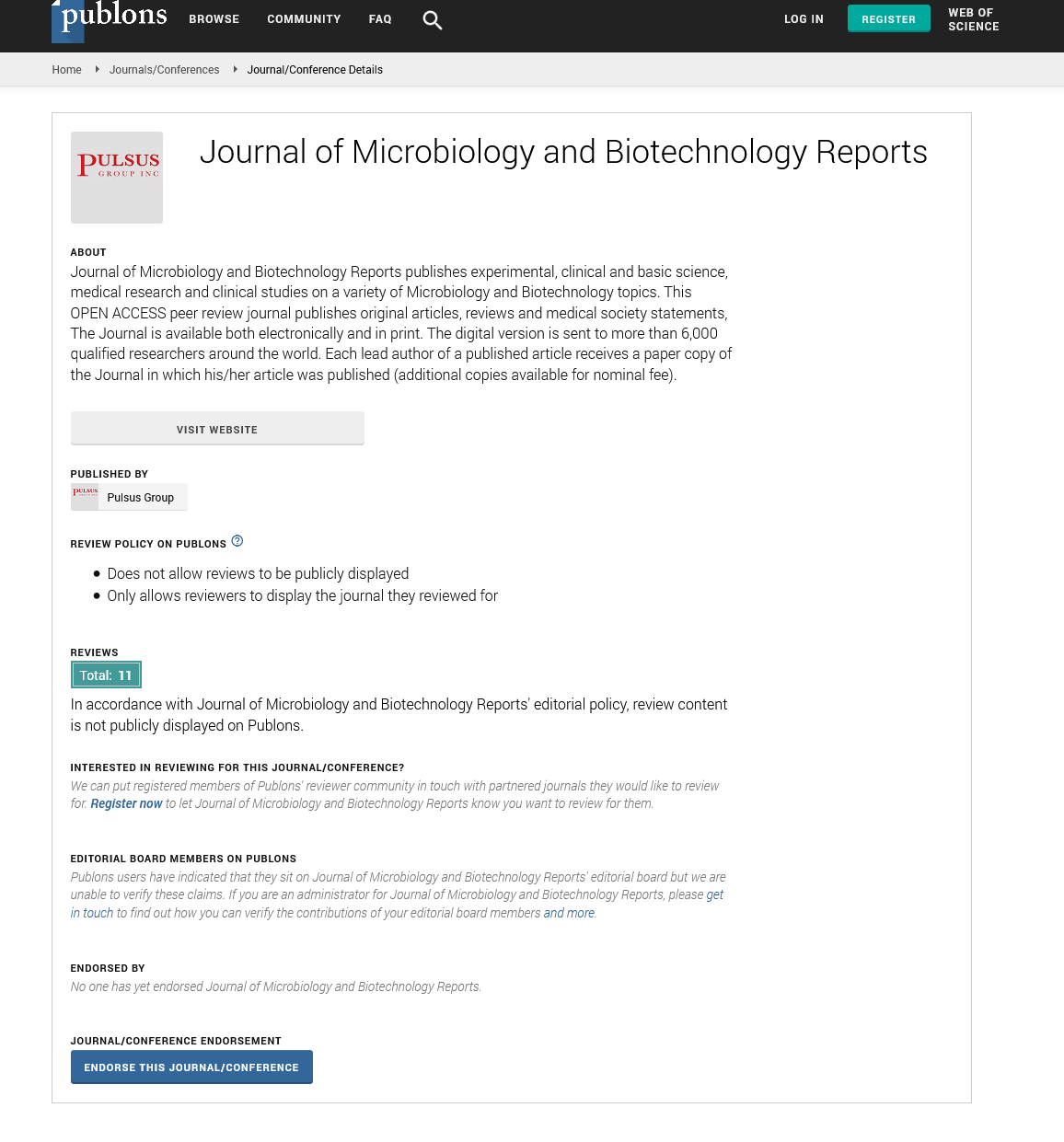Commentary on Acinetobacter Baumannii
Received: 03-Nov-2021 Accepted Date: Nov 17, 2021; Published: 24-Nov-2021
This open-access article is distributed under the terms of the Creative Commons Attribution Non-Commercial License (CC BY-NC) (http://creativecommons.org/licenses/by-nc/4.0/), which permits reuse, distribution and reproduction of the article, provided that the original work is properly cited and the reuse is restricted to noncommercial purposes. For commercial reuse, contact reprints@pulsus.com
Commentary
Acinetobacter baumannii is a nosocomial pathogen which the World Health Organization’s considered number one critical prioritypathogen. It has become a growing problem in hospitals as a predominant multi-drug resistant that left clinicians with limited treatment options. Its main mechanisms for -lactam resistance are the production of carbapenemases especially Amber class D lactamases followed by B -lactamases. NDM-1 which is an example of the later poses a major health concern particularly in the light of its spread through population. To precede our study, 74 Acinetobacter Baumannii isolates were collected from hospital laboratories during the period from July 2017 till June 2018. Antimicrobial susceptibility testing was done by Kirby-Bauer Disc Diffusion method (KBDD) andMinimum Inhibitory Concentration (MIC) was detected using E-test method. CRAB ones were tested by both of Modified Hodge Test (MHT) and Imipenem EDTA Combined Disc Test (CDT) to detectmetallo eta-lactams (MBL) producers. Then existence of NDM-1 gene was further identified. All of the 74 Acinetobacter baumanni isolates were found to be multi-drug resistant (MDR). 36 of them (48.65%) were resulted as carbapenem resistant and 27 (36.49%) were metalloeta-lactams (MBL) producers. 12/27 (44.44%) MBL poses NDM-1 gene in the first detection procedure while the other negative 15 ones the percentage of NDM-1 was found to be 10/15 (66.67%)when using different primer. PCR products were then verified by DNA sequencing. The final consensus sequences were analyzed and submitted to NCBI GeneBank data base, representing accession numbers are JF838352.1, MK682768.1 and MN251667.1.The alignments showed similarity ranged from 94 %-96.4% amino acids identity. Acinetobacter baumannii is considered the World Health Organization’s number one critical precedence pathogen especially carbapenem producing andmulti-drug resistant isolates. The reason is the limited available effective antimicrobial agents and the association of these resistant strains to poor prognostic (5-6).A. baumannii can beget a wide range of infections including bacteremia, meningitis, urinary tract, blood- sluice infections, surgical crack infections and ventilator associated pneumonia. These infections are generally resistant to three or further groups of antibiotic families from quinolones, cephalosporins, β-lactams, aminoglycosides to carbapenems . Due to its capability to accept exogenous inheritable material and overexpress endogenous resistance genes, it has snappily Redounded in the appearance of the MDR phenotype within multiple clonal lineages. In addition to antibiotic resistance, the capability to cleave and produce biofilm on both biotic and abiotic shells has been shown to be a acridity factor in numerous clinical isolates. Acinetobacter baumannii isolates were tested for antimicrobial vulnerability by standardized fragment prolixity fashion using Kirby- Bauer system according to the guidelines recommended by the Clinical and Laboratory Norms Institute (CLSI, 2013) (12). A total number of 17 antimicrobial discs were used representing different types of antimicrobial groups which were Amikacin30μg, Amoxicillin-clavulanic acid20 ̸ 10μg, Ceftriaxone30μg, Tetracycline30μg, Azithromycin15μg, Cefepime30μg, Cefotaxime30μg, Ceftazidime30μg, Ciprofloxacin5μg, Gentamycin10μg, Imipenem 10μg, Levofloxacin5μg, Meropenem10μg, Nitrofurantoin300μg, Tigecycline15μg, Colistin10μg and Trimethoprim sulphamethoxazole1.25/23.7μg.These antimicrobial discs were chosen as they’re the most generally used in the three hospitals. Multi-drug resistant (MDR) strains are well- defined asnon-susceptible
to at least one agent in three or further antimicrobial orders; while considerably medicine resistant (XDR) are defined as resistant to all standard antimicrobial agents except colistin and tigecycline. But for Pan medicine resistant bones, they were defined as resistant to polymyxin B and/ or colistin in addition to the resistance to all agents of all antimicrobial groups.
Acknowledgements
The authors are grateful to the journal editor and the anonymous reviewers for their helpful comments and suggestions.
Declaration of Conflicting Interests
The authors declared no potential conflicts of interest for the research, authorship, and/or publication of this article.





